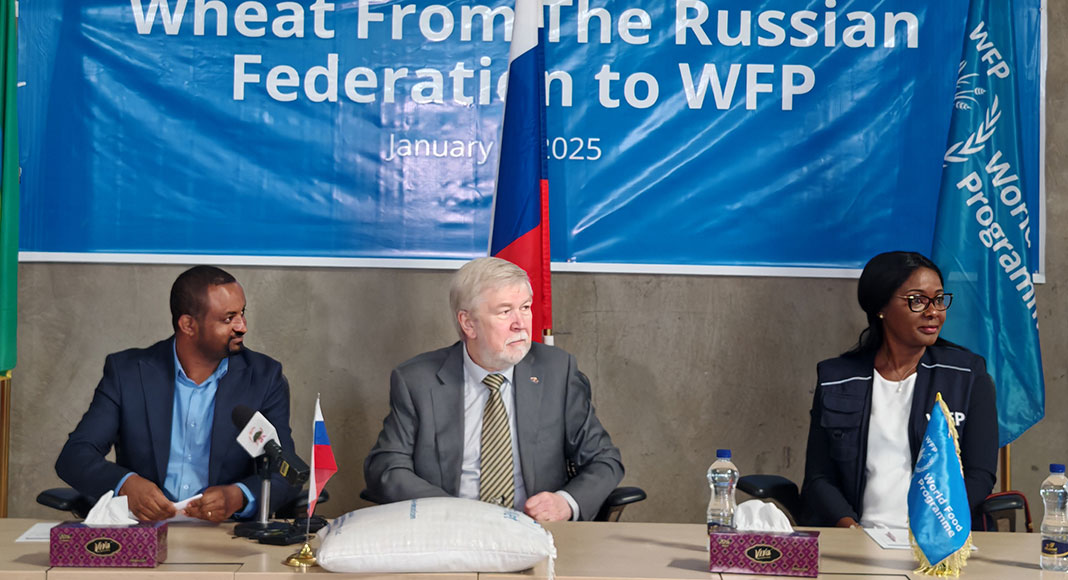
- Only 60 percent of rations being supplied
Refugees taking shelter in Ethiopia are grappling with a 40 percent fall in humanitarian aid rations as international donors turn focus to crises elsewhere around the globe, according to the World Food Program (WFP).
The shortages are affecting close to 1.1 million refugees residing in camps across Ethiopia, who have no choice but to make do with only 60 percent of the necessary humanitarian assistance as funding falls short and supplies dwindle.
Ethiopia hosts refugees primarily from Somalia, South Sudan and Eritrea, as well as a new influx of refugees fleeing conflict in Sudan.
Financial constraints for humanitarian organizations including WFP, mean the portion of humanitarian assistance package nearly halved to around 60 percent, Mulualem Desta, deputy director-general for the Refugees and Returnees Services (RRS) in Ethiopia, told The Reporter.
The refugees are getting less humanitarian assistance than they used to.
– Advertisement –
“We are trying to provide humanitarian assistance to all the refugees in Ethiopia. However, the rations in assistance packages per head have dropped to 60 percent, due to scarce funding. Every refugee is getting aid but the aid package per head is thinning. This is partly because the need for humanitarian assistance globally has surged due to increasing conflicts and disasters, diverting funding sources elsewhere,” said Claire Nevill, communications head at WFP Ethiopia.
According to a WFP report released this week, around 800,000 refugees have been receiving only 60 percent of the standard food ration for over a year. However, Sudanese refugees who have arrived since April 2023 are receiving full rations, and WFP plans to maintain this level of support for at least the next six months.
RRS officials and WFP Ethiopia representatives traveled to Adama this week to welcome a contribution of 1,630 tons of wheat from the Russian government. The aid is intended for refugee populations in the Gambella region.
WFP reps say the donation is crucial in light of dwindling resources.
“This significant contribution from the Russian Federation will support individuals seeking refuge in Ethiopia, who have nowhere else to turn to for their food needs,” said WFP Ethiopia Deputy Country Director, Jennifer Bitonde. “This donation comes at a critical time, as WFP faces challenges to provide life-saving support to refugees who rely entirely on WFP for their daily food needs. We are deeply grateful to the people of Russia for their continued support and solidarity with refugees in Ethiopia.”
Evgeny Terekhin, Russian ambassador to Ethiopia, said that although food assistance is necessary, self-sufficiency through increased agricultural production is the only permanent solution to the country’s problems.
“Russia cooperates closely with the UN World Food Program. Our country finances the activities of the WFP to the tune of around 60 to 70 million dollars each year. I am thoroughly convinced that the close cooperation between UN contributing countries and agencies, with the WFP being the most notable among them, is crucial for supporting humanitarian aid saving across the globe,” he said.
Mulualem told The Reporter the wheat will go towards feeding close to 164,000 refugees taking shelter in Gambella. There are an estimated 400,000 refugees spread across seven camps in Gambella. The vast majority are from South Sudan.
A recent WFP assessment revealed that nearly a quarter of the refugees have been resorting to emergency and crisis coping strategies such as begging, selling assets and livestock.
Refugee operation is based on the international community’s burden- and responsibility-sharing principles. Host countries like Ethiopia also take a share in the responsibilities but the volume and kind of humanitarian assistance from international donors has been dwindling significantly over the past three years, according to Mulualem.
He sees the proliferation of conflict elsewhere on the globe as the primary driver of the decline in assistance, as supplies are diverted to meet needs in places like Afghanistan, Syria, Yemen, and Ukraine.
“If we look only at the food assistance for refugees in Ethiopia, they are getting 60 percent of the standard food ration. The minimum daily food rations are also not enough due to the high refugee population in the country,” said the Deputy Director-General.
Mulualem says the situation is causing malnutrition in children and mothers, who account for up to 80 percent of the refugee population.
He observes Ethiopia’s refugee crisis is growing more difficult as a result of lack of support for rehabilitation programs, budgetary cuts, and a growing influx of refugees.
A refugee in Ethiopia stays for an average of 15 years, while some remain in the country for longer than three decades. Meanwhile, RRS is facing annual budget cuts of up to 20 percent, while refugee populations grow by four percent.
The resulting situation creates fertile ground for conflict between refugees and host communities.
Ethiopia is the largest refugee-hosting country in Africa with over 1.1 million refugees, according to WFP Ethiopia. The organization targets 31 refugee locations for its humanitarian aid distribution, including 21 camps, five settlements, three sites, and two transit centres.
Editor’s Note
This article was initially published as “Half-million refugees in Ethiopia not getting aid: officials.” However, the headline was inaccurate as a result of a mix up in figures during the reporting process. The Reporter has verified that while refugees in Ethiopia are receiving 40 percent less aid than they used to, the supply of humanitarian assistance is still available to all 1.1 million refugees sheltered across the country. The Reporter would like to offer our most sincere apologies for the confusion and any inconvenience the misunderstanding may have caused.
.
.
.
#Aid #Shortages #Affect #Million #Refugees #Ethiopia #Officials
Source link











